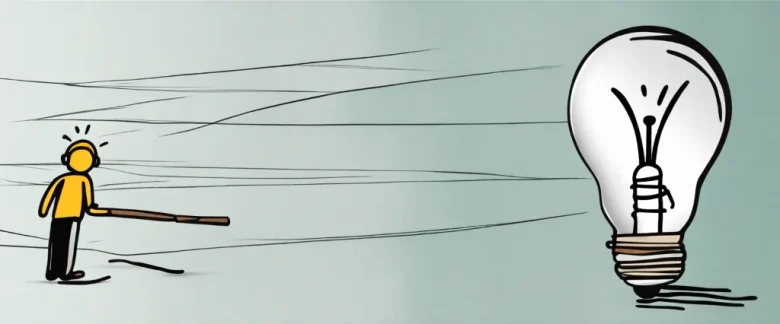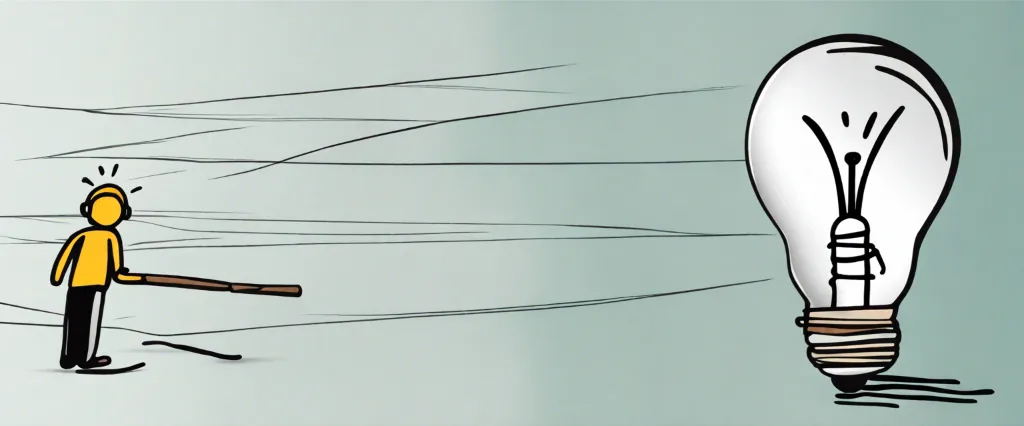In “Made to Stick,” Chip Heath explores the common traits found in ideas that stick in our minds and make a lasting impact. Co-authored with his brother, Dan Heath, Chip Heath is a professor at Stanford Graduate School of Business and renowned expert in the field of communication and psychology. Together, they dissect what makes some ideas more memorable and persuasive than others, providing practical advice for crafting messages that resonate with a wide audience.
Chapter 1: Introducing the concept of “stickiness” and what makes ideas memorable.
In Chapter 1 of “Made to Stick” by Chip Heath, the concept of “stickiness” is introduced, which refers to the ability of ideas to be memorable and impactful. The authors argue that many ideas fail to stick because they are forgettable or not compelling enough. They discuss six key principles that make ideas more likely to stick: simplicity, unexpectedness, concreteness, credibility, emotions, and stories.
The authors provide various examples to illustrate how these principles can be applied to make ideas more memorable. For instance, they point out that making ideas simple and concrete helps to make them more understandable and relatable to the audience. Additionally, incorporating unexpected elements or using emotional storytelling can make ideas more engaging and memorable.
Overall, Chapter 1 highlights the importance of creating ideas that are not only compelling but also have the potential to stick in people’s minds. By understanding and applying the principles of stickiness, individuals and organizations can increase the likelihood of their ideas being remembered and having a lasting impact.
Chapter 2: Exploring the principle of simplicity in crafting effective messages.
In Chapter 2 of “Made to Stick” by Chip Heath, the principle of simplicity is explored as a key factor in crafting effective messages that are memorable and impactful. The chapter emphasizes the importance of stripping away unnecessary details and focusing on the core message in order to prevent the “Curse of Knowledge,” where experts assume others will understand their message as easily as they do.
The chapter discusses various strategies for simplifying messages, such as finding the core of the message and removing any jargon or unnecessary information that may confuse or overwhelm the audience. Heath also highlights the power of using unexpectedness and concrete language to make messages more engaging and easier to remember.
The authors provide practical tips and examples to illustrate how simplicity can be achieved in communication, including the importance of using analogies, visual aids, and stories to make complex ideas more accessible and relatable to the audience. By focusing on simplicity and clarity, communicators can increase the likelihood that their messages will stick with the audience and be effectively remembered and acted upon.
Chapter 3: Discussing unexpectedness and how to capture and maintain people’s attention.
Chapter 3 of “Made to Stick” by Chip Heath explores the concept of unexpectedness and how to capture and maintain people’s attention. The chapter delves into the idea that in order for an idea to be memorable and impactful, it must first break through the mental barriers of predictability and surprise the audience. The authors emphasize the importance of creating moments of surprise or unexpectedness in communication to make ideas stick in the minds of listeners.
They discuss various techniques for incorporating unexpected elements into messages, such as introducing a mystery, creating knowledge gaps, or providing surprising statistics. By defying expectations and offering new and interesting information, a message is more likely to capture the attention of the audience and be remembered.
The chapter also explores the concept of the “gap theory,” which suggests that creating a gap between what people know and what they want to know can drive interest and engagement. By presenting information in a way that teases and intrigues the audience, communicators can effectively maintain attention and increase the likelihood of the message being remembered.
Overall, Chapter 3 of “Made to Stick” highlights the power of unexpectedness in communication and provides practical strategies for incorporating this element into messages to make them more memorable and persuasive.
Chapter 4: Delving into the importance of concrete details and vivid storytelling.

In Chapter 4 of “Made to Stick,” Chip Heath delves into the importance of using concrete details and vivid storytelling to make ideas memorable and engaging. He explains that abstract concepts are often difficult for people to grasp and remember, but concrete details help to make ideas more tangible and relatable. By incorporating specific examples, anecdotes, and sensory details, communicators can bring their ideas to life and create a more lasting impact.
Heath provides several strategies for making ideas more concrete and memorable, including using specific language and vivid imagery, appealing to the senses, and creating mental images that resonate with the audience. He also emphasizes the power of storytelling in making ideas stick, as narratives can help to create an emotional connection with the audience and make the message more compelling.
Overall, Chapter 4 highlights the importance of using concrete details and vivid storytelling in communication to ensure that ideas are not only understood but also remembered and acted upon. By incorporating these techniques into their messaging, communicators can make their ideas more engaging, persuasive, and successful.
Chapter 5: Examining the role of credibility and how to make ideas believable.
Chapter 5 of “Made to Stick” by Chip Heath explores the concept of credibility and how to make ideas believable. The chapter emphasizes the importance of credibility in making ideas stick in people’s minds and influencing their behavior. The authors argue that credibility is crucial for persuading others and gaining their trust.
The chapter discusses various factors that contribute to credibility, including authority, statistics, credentials, and vivid details. It also highlights the importance of using external sources and testimonials to enhance credibility. The authors provide examples of how organizations and individuals have effectively used credibility to make their ideas more persuasive and memorable.
Furthermore, the chapter offers practical tips on how to enhance credibility in communication, such as using concrete and specific language, providing evidence and proof, and making ideas more relatable to the audience. The authors also stress the need to constantly reinforce credibility in order to maintain the trust of the audience.
Overall, Chapter 5 of “Made to Stick” emphasizes the importance of credibility in making ideas stick and offers useful strategies for enhancing credibility and making ideas more believable to others.
Chapter 6: Highlighting the power of emotions in making ideas resonate with audiences.
Chapter 6 of Made to Stick explores the importance of emotions in creating ideas that resonate with audiences. The chapter begins by highlighting how emotional connections are essential for making ideas memorable and impactful. Emotions can make ideas more engaging, persuasive, and relatable, ultimately leading to a deeper connection with the audience.
The chapter also delves into the concept of the Curse of Knowledge, which is the tendency for individuals to assume that their audience has the same level of knowledge as they do. This can lead to a lack of emotional resonance in communication, as the speaker may focus too much on facts and figures rather than tapping into the audience’s emotions.
To combat the Curse of Knowledge and enhance emotional resonance, the authors suggest using techniques such as storytelling, using concrete language, and appealing to the audience’s values and beliefs. By incorporating these elements into their communication, individuals can create ideas that are more likely to stick with their audience.
Overall, Chapter 6 reinforces the idea that emotions are a powerful tool in making ideas memorable and persuasive. By connecting with the audience on an emotional level, individuals can create messages that are not only heard but also felt.
Chapter 7: Discussing the use of stories to make ideas more persuasive and memorable.
In Chapter 7 of “Made to Stick,” Chip Heath discusses the power of using stories to make ideas more persuasive and memorable. He starts by explaining that stories are more engaging and impactful than facts and statistics alone because they provide a narrative structure that helps people understand and remember the information being presented.
Heath provides several examples of how stories have been used effectively to communicate messages in a way that resonates with audiences. He emphasizes the importance of using concrete details, emotions, and unexpected twists to make stories more compelling and memorable.
He also introduces the concept of “plot-driven storytelling,” which involves setting up a challenge or conflict that the audience can relate to and then resolving it with a satisfying conclusion. This creates a sense of tension and resolution that keeps people engaged and makes the message more likely to stick in their minds.
Overall, Chapter 7 of “Made to Stick” highlights the value of using stories to make ideas more persuasive and memorable by tapping into the power of narrative to captivate and connect with audiences.

Chapter 8: Summarizing the SUCCESs framework for creating sticky ideas: Simple, Unexpected, Concrete, Credible, Emotional, Stories.
Chapter 8 of Made to Stick by Chip Heath summarizes the SUCCESs framework for creating sticky ideas. This framework consists of six key principles: Simple, Unexpected, Concrete, Credible, Emotional, and Stories.
The first principle, Simple, emphasizes the importance of clarity and brevity in communication. Ideas should be expressed in a way that is straightforward and easy to understand. The second principle, Unexpected, highlights the power of surprising or counterintuitive information to grab people’s attention and make ideas more memorable.
The third principle, Concrete, emphasizes the use of vivid and specific details to make ideas more tangible and relatable to the audience. The fourth principle, Credible, stresses the importance of providing evidence or expertise to support the idea and increase its believability.
The fifth principle, Emotional, focuses on creating an emotional connection with the audience to make ideas more persuasive and memorable. The final principle, Stories, highlights the power of storytelling to make ideas more engaging and memorable by providing context and a narrative structure.
Overall, the SUCCESs framework provides a practical and comprehensive guide for creating sticky ideas that resonate with audiences and leave a lasting impact.
After Reading
In “Made to Stick,” Chip Heath explores the essential elements that make ideas memorable and impactful. By examining the six principles of stickiness – simplicity, unexpectedness, concreteness, credibility, emotions, and stories – Heath provides a roadmap for creating messages that resonate with audiences and stand the test of time. Through engaging anecdotes and practical tips, “Made to Stick” offers valuable insights for anyone looking to craft more persuasive and compelling communications.
1. Contagious: How to Build Word of Mouth in the Digital Age” by Jonah Berger – This book explores the reasons why certain ideas and products go viral while others don’t, offering practical advice on how to make your own messages spread like wildfire.
2. The Power of Moments: Why Certain Experiences Have Extraordinary Impact” by Chip Heath and Dan Heath – Written by one of the authors of “Made to Stick,” this book examines why certain moments in our lives leave a lasting impact and how we can create more of these memorable experiences for ourselves and others.
3. Influence: The Psychology of Persuasion” by Robert Cialdini – This classic book delves into the principles of influence and persuasion, offering insights into how we can effectively communicate and persuade others to adopt our ideas.
4. Originals: How Non-Conformists Move the World” by Adam Grant – This book explores the traits and behaviors of original thinkers and innovators, shedding light on how we can harness our creativity to make our ideas stick and drive change.
5. Talk Like TED: The 9 Public-Speaking Secrets of the World’s Top Minds” by Carmine Gallo – Drawing insights from some of the most successful TED Talks, this book offers practical tips and techniques for delivering compelling presentations that captivate audiences and leave a lasting impact.




